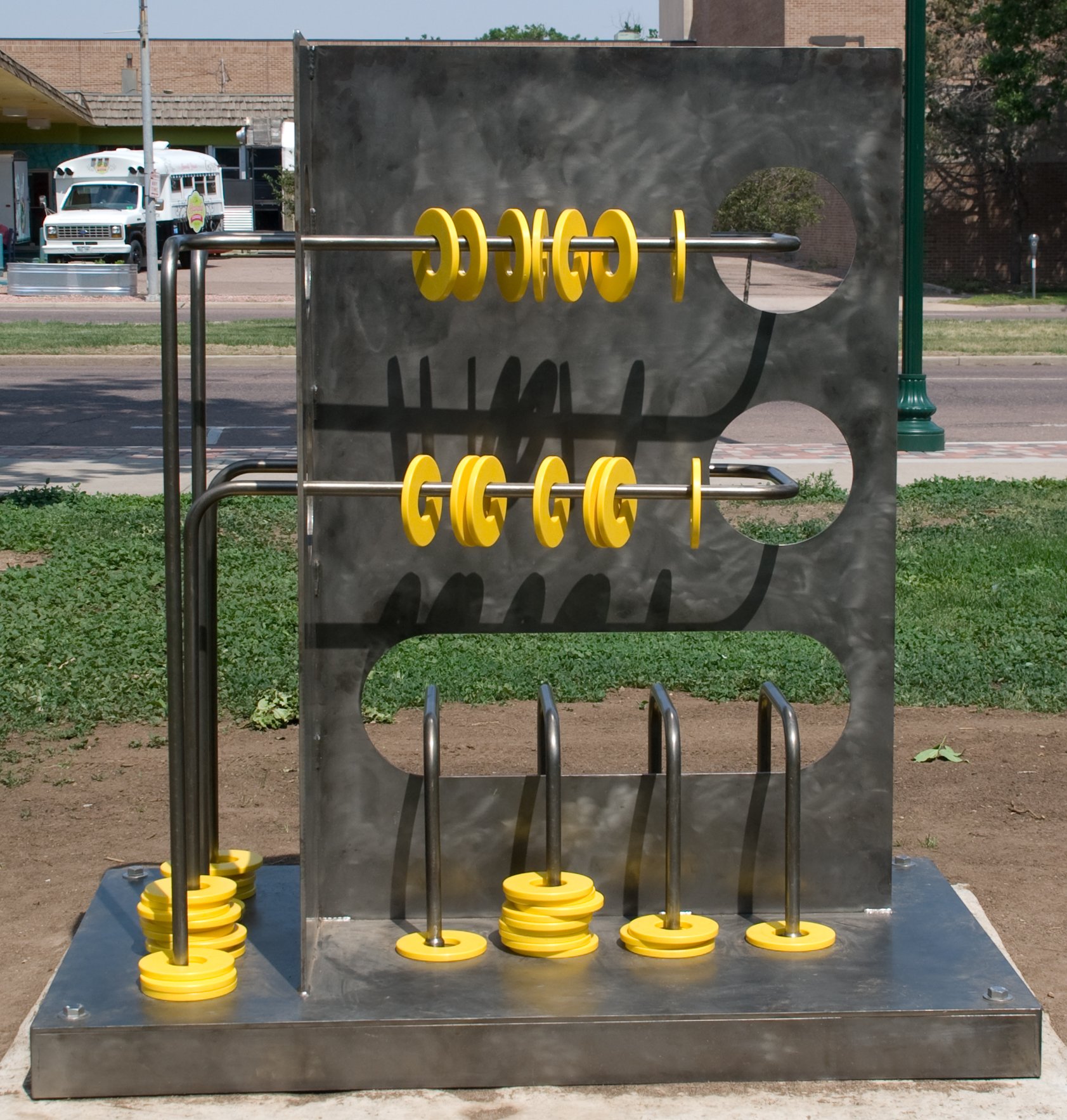Play Date
Play Date is a calendar that works like an abacus. From the top-down, the month, day, and year appear as rings collect on or disappear from the steel rods. The viewer is encouraged to manipulate the rings up, across, and around the system of steel rods, allowing the rings to hang vertically from the horizontal lengths of rod or to collect in a stack at the rods’ vertical bases. Although a calendar, its function is not to mark time, but to entice the viewer to leave a temporary private mark in a public space. Play Date invites the viewer into a relationship. At first glance, the viewer becomes aware of the piece, then aware that he or she may interact with it and move its parts. Next, the viewer might become curious about its character or nature. What is the significance of its form? Is there any internal logic to the piece? Does the movement of its rings create any meaning? Upon achieving this understanding, the viewer, if he or she chooses, can set a date . . . present, past, or future . . . perhaps with relevance only to the viewer, boldly leaving a clue to a personal secret for others to observe, ponder, and eventually erase.
Play Date, one of 11 pieces chosen for display in Colorado Springs' 15th Annual Art on the Streets, and winner of 2nd place in the competition, is on display now permanently in downtown Acacia Park.

